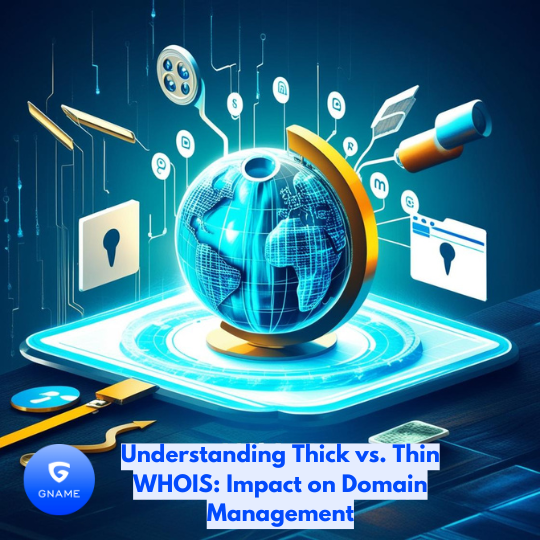When it comes to managing domains, understanding the differences between thick and thin WHOIS databases is crucial for both domain owners and registrars. WHOIS is a widely used Internet record listing that identifies who owns a domain and provides relevant contact information. This blog post will explore the distinctions between thick and thin WHOIS, their implications for domain management, and best practices for navigating these differences.

What is WHOIS?
WHOIS is a protocol that allows users to query databases that store registered users or assignees of a domain name or an IP address block. This information is essential for various reasons, including maintaining the integrity of the domain name system (DNS), facilitating communication between users and domain owners, and ensuring accountability within the internet ecosystem.
There are two main types of WHOIS databases: thick WHOIS and thin WHOIS. Understanding these two types is critical for anyone involved in domain management.
Thick WHOIS vs. Thin WHOIS
Thick WHOIS
A thick WHOIS database contains all information related to a domain name registration, including the registrant's details, administrative and technical contacts, and the history of the domain. This centralized approach means that all necessary information is stored in one database managed by the registrar.
For example, if a domain is registered with a thick WHOIS registrar, anyone querying the WHOIS database can access all relevant information about that domain. This can include the name of the registrant, their email address, phone number, and the domain’s registration and expiration dates. This comprehensive view can significantly enhance transparency and accountability, making it easier for users to contact domain owners when needed.
Thin WHOIS
On the other hand, a thin WHOIS database provides limited information. In this case, only the registrar’s information is available; the registrant's data is stored in a separate database managed by the registry. This means that when you perform a WHOIS lookup on a domain registered with a thin WHOIS registrar, you may only see the registrar's contact information and not the actual owner’s details.
Thin WHOIS models can pose challenges for those needing to contact domain owners for various reasons, such as resolving disputes or addressing concerns related to domain use. The separation of registrant data from the registrar can lead to obscured ownership and make it harder to establish accountability.
Implications for Domain Management
Understanding the differences between thick and thin WHOIS is vital for effective domain management. Here are some key implications to consider:
Transparency and Accountability
: Thick WHOIS databases promote greater transparency by making it easier to identify domain owners. This can be particularly important for businesses and organizations that rely on domain registration to establish their online presence. In contrast, thin WHOIS can lead to challenges in accountability, especially if there are disputes over domain ownership.
Contacting Domain Owners
: When attempting to reach out to a domain owner, thick WHOIS provides direct access to registrant information. This can facilitate communication and expedite resolution processes. In contrast, thin WHOIS may require additional steps to get in touch with the owner, which can delay resolution.
Legal and Compliance Considerations
: For legal professionals and organizations, understanding WHOIS data is essential for compliance with regulations. Thick WHOIS can simplify the process of gathering necessary information for legal proceedings, while thin WHOIS may complicate matters due to the lack of accessible registrant data.
Best Practices for Navigating WHOIS
To effectively navigate the complexities of WHOIS data, consider the following best practices:
Choose the Right Registrar
: When registering a domain, consider whether you prefer thick or thin WHOIS. Research different registrars to determine which model best suits your needs and provides the level of transparency you require.
Stay Informed
: Regularly review WHOIS information for your domains to ensure that all details are accurate and up-to-date. This is especially important if you change contact information or if there are changes in ownership.
Leverage Privacy Protection
: If privacy is a concern, consider using privacy protection services offered by many registrars. These services can help shield your personal information while still complying with WHOIS requirements.
In conclusion, understanding the differences between thick and thin WHOIS is essential for effective domain management. By recognizing the implications of each model and following best practices, domain owners can navigate the complexities of WHOIS data with confidence.























